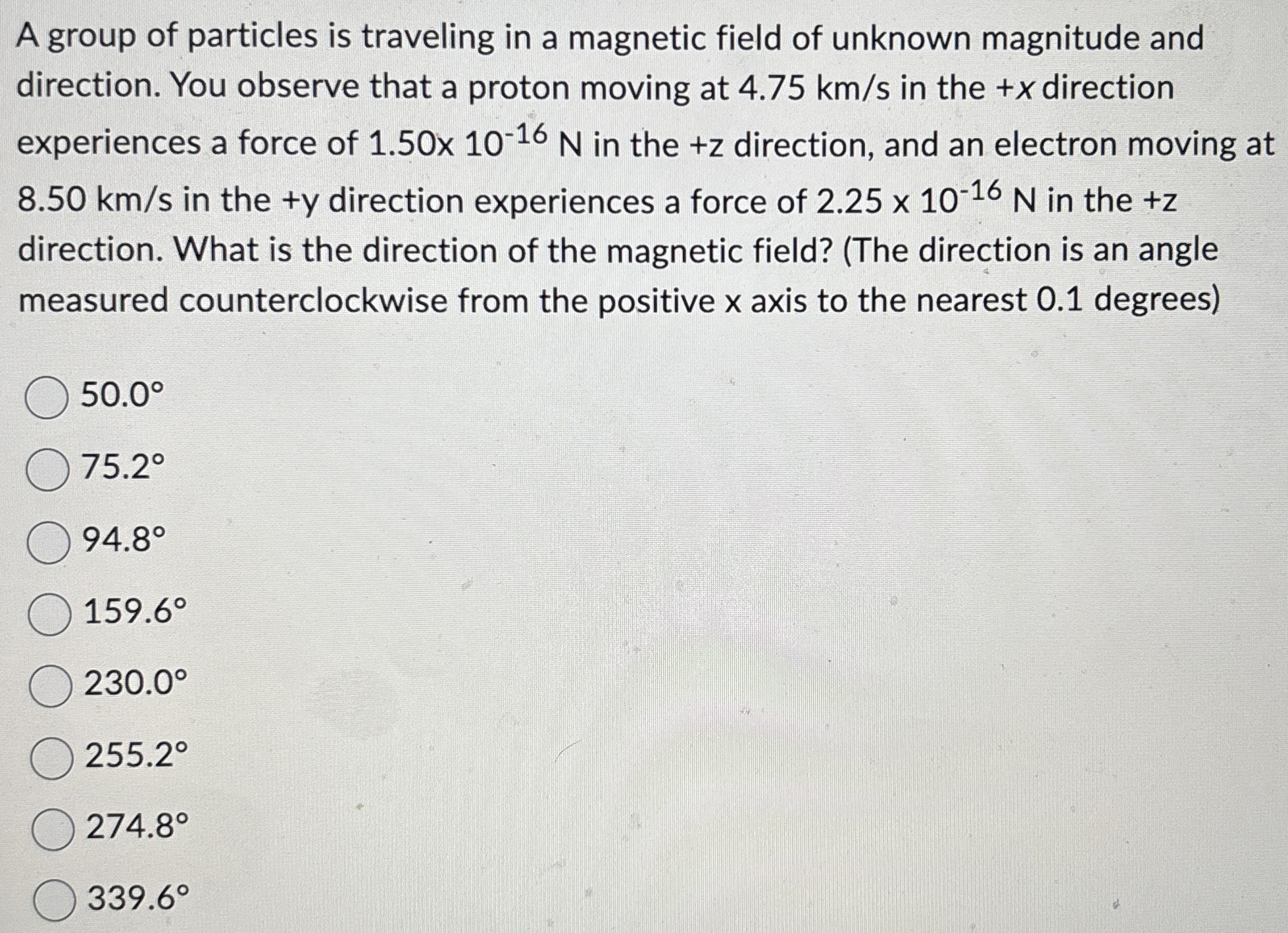A group of particles is traveling in a magnetic field of unknown magnitude and direction. You observe that a proton moving at 4.75 km/s in the +x direction experiences a force of 1.50×10−16 N in the +z direction, and an electron moving at 8.50 km/s in the +y direction experiences a force of 2.25×10−16 N in the +z direction. What is the direction of the magnetic field? (The direction is an angle measured counterclockwise from the positive x axis to the nearest 0.1 degrees) 50.0∘ 75.2∘ 94.8∘ 159.6∘ 230.0∘ 255.2∘ 274.8∘ 339.6∘
